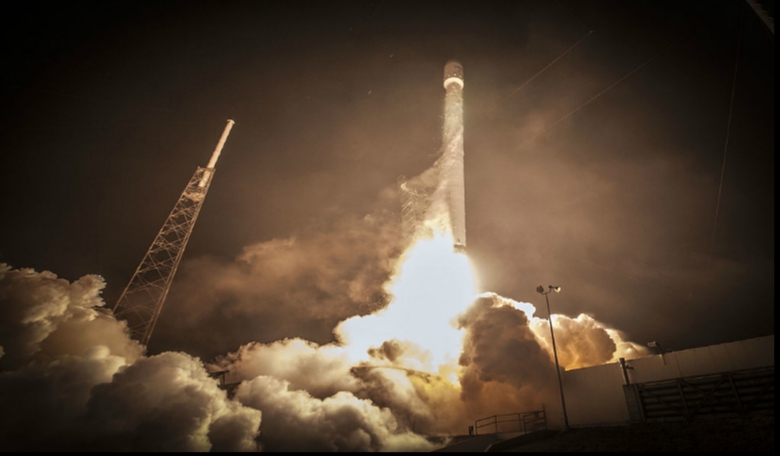n June 15, 2016, a SpaceX Falcon 9 rocket successfully launched two all-electric commercial telecommunications satellites (Eutelsat and ABS) into geostationary transfer orbit. An almost identical mission with the same two customers was successfully completed by SpaceX in March 2015. Both satellites, the Eutelsat 117 and the ABS-2A, are now in orbit and sending signals.
The satellites were part of a four-satellite contract that had been signed in March 2012 with ABS and Satmex; Satmex has since been bought by Eutelsat. The contract marked the first use of all-electric propulsion by Western satellite owners. Replacing the conventional chemical propellant makes the satellites about 50% lighter, which in turns enables the satellite owners to add extra payloads or find less expensive launch vehicles. In this particular case, while the two all-electric satellites weigh about 4000 kilograms combined, had they been using conventional propellants, their weight would have been roughly 4000 kilograms each. However, electric propulsion does have a significant drawback, as it takes up to six months for the satellite to reach its final destination in geostationary orbit. Satellite manufacturers are currently working on finding the balance between weight and commercial service start date, the two aspects vital to satellite owners.
The launch comes at a time of transition for both Eutelsat and ABS. Eutelsat is has suffered weak first-quarter earnings and has warned its investors that previously issued revenue and profit forecasts for 2016 and 2017 will likely not be met. ABS, owned by private-equity investor Permira, is for sale, and industry officials widely view Eutelsat as the most logical buyer.
Eutelsat 117 West B will be operated from 117 degrees west longitude. Its 48 Ku-band transponders will be distributed over four regional beams covering the southern United States and Mexico, the Andean region, Central America, the Caribbean and South America.
The attempted landing of the Falcon 9 rocket's first stage on a drone ship in the Atlantic Ocean was not successful. According to Elon Musk's Twitter post, the attempt resulted in the stage's “rapid unscheduled disassembly” on impact.
The landing failure was most likely caused by the low thrust on one of the three Merlin engines, which prevented the rocket stage from slowing down enough before landing on the unmanned drone ship, a modified barge named “Of Course I Still Love You”.
 Rapid unscheduled disassembly of the Falcon 9 rocket stage.
Rapid unscheduled disassembly of the Falcon 9 rocket stage.
“Looks like thrust was low on 1 of 3 landing engines. High-g landings [very] sensitive to all engines operating at max…. Upgrades underway to enable rocket to compensate for a thrust shortfall on one of the three landing engines. Probably get there end of year,” Musk said. “Maybe hardest impact to date. Droneship still ok.”
Until recently, all rocket stages usually fell into the ocean and could not be recovered and reused. SpaceX has been experimenting with sea landings (with three successful attempts so far, and a successful landing on dry land at Cape Canaveral). The purpose of such landings is to ultimately make rockets reusable, which in turn will make spaceflight more affordable. Even failed landing attempts are valuable as they point out the upgrades necessary to make rocket stage landings a regular occurrence.
“This is all experimental,” SpaceX engineer Michael Hammersley said during the launch webcast. “We’re very excited for the day when it becomes regular. But clearly we’re not quite there yet.”











